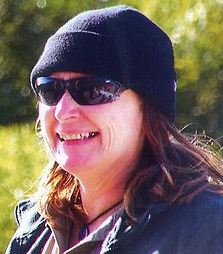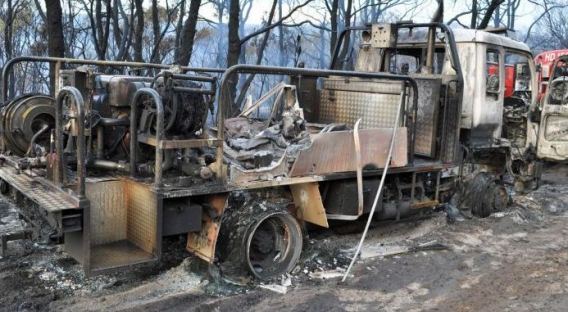One resident dead and 49 homes destroyed in Australian bushfire
One person collapsed and died on the roof of his house while spraying water to defend his home from a fire in the Perth hills of Western Australia on Sunday. The 62-year old man’s house was not damaged while the 650-hectare (1,606 acres) fire burned 49 others in the Shire of Mundaring. One resident tried to get back to their house on Monday afternoon and suffered burns to the hands and feet.
More information.
Three homes burn in Kansas wildfire
At least three homes burned Sunday in a large grass fire near the Kansas-Missouri border. The 600-acre fire was pushed by very strong winds which caused problems for the firefighters that responded from both Kansas and Missouri. Cherokee County officials said the fire may have been caused by a power line that failed due to the wind.

Red Flag Warnings, January 13

Areas in southern California, Texas, Oklahoma, and Kansas are under Fire Weather Watches and Red Flag Warnings today.
UPDATE at 6:25 p.m. PST, January 13, 2014. The Red Flag Warning areas in California have grown:
More information.
2014 MAFFS Commander named
North Carolina resident Col. Charles D. Davis III will command the national military mission charged with combating wildland fires using C-130 aircraft outfitted with the Modular Airborne Fire Fighting System.

“MAFFS is a team effort,” said Davis, who also commands the Operations Group at the North Carolina Air National Guard’s 145th Airlift Wing based at Charlotte Douglas International Airport in Charlotte, N.C. “We protect lives and property from forest fires, and I’m proud to be a part of it.”
As commander of the Air Expeditionary Group Wildland Fire Fighting, Davis will lead three Air National Guard and one U.S. Air Force Reserve Command units that fly military C-130 aircraft and use them as aerial tankers. Headquartered in Boise, Idaho, the Group controls MAFFS operations nationwide at the direction of the U.S. Forest Service.
A U.S. Air Force master navigator with more than 5,300 hours of military flying time, Davis, of Weddington, N.C., has more than 1,000 hours of combat time earned supporting Operations Enduring Freedom and Iraqi Freedom. In civilian life, he is an Airbus A330 Flight Crew Training Instructor at U.S. Airways.
Arizona legislators consider bills related to hotshots’ deaths
State legislators in Arizona are considering bills that are related to wildfire management and the deaths of the 19 members of the Granite Mountain Hotshots. The firefighters were entrapped and killed on the Yarnell Hill Fire near Yarnell, Arizona on June 30, 2013.
- The state organization responsible for managing the Yarnell Hill Fire is requesting a budget for the Arizona State Forestry Division that is nearly double what they received in the fiscal year that ends June 30.
- A bill is being considered that would allow local governments to ban the sale of certain fireworks.
- Another bill seeks to clarify what autopsy documents and photos are available to the public. County authorities refused to release autopsy reports for the Yarnell Hill firefighters.
- Some legislators want the state to buy the state trust land where the hotshots died so it can be preserved as a memorial.
- Legislators are considering helping the city of Prescott with its costs related to the hotshots’ deaths, but they may wait until the 100+ claims and/or lawsuits are settled before proposing anything specific.
- They may propose legislation that would at least provide life insurance for public safety workers.
Type 2 helicopter contracts contested
WorldWind Helicopters has protested the contracts that were awarded for 31 Type 2 helicopters used to fight wildland fires. On December 17 the U.S. Forest Service announced exclusive use contracts for the award period that began December 17 and ends April 30, 2015 with options for three additional years. The solicitation was first announced on April 5, 2013 and took over eight months to complete.
Wing box replacements in the USFS C-130s

The legislation that enabled the transfer of seven C-130H aircraft from the Coast Guard to the U.S. Forest Service to serve as air tankers required that the wing boxes be replaced and other maintenance be performed.
Fire Aviation has more information about the replacement of the wing boxes and other steps that must be taken to convert the C-130Hs into air tankers.




